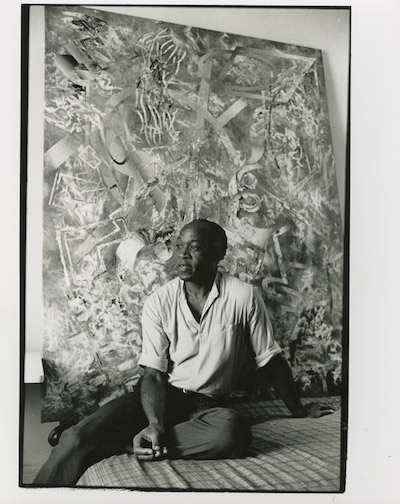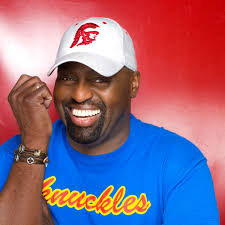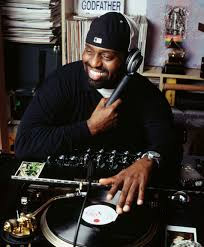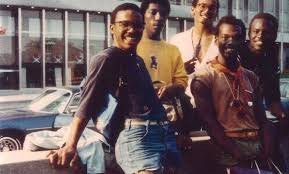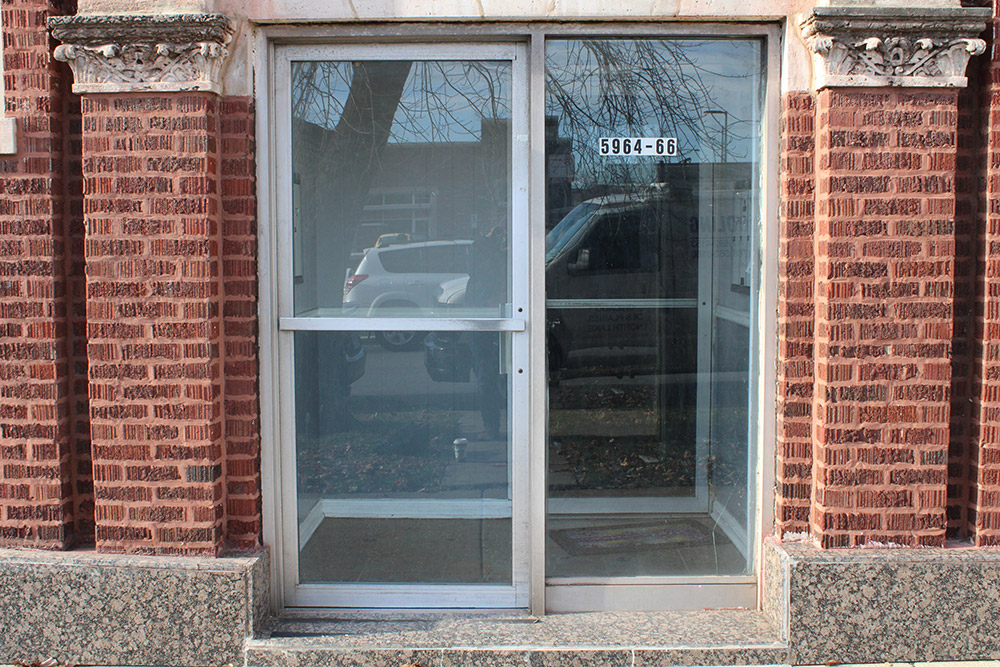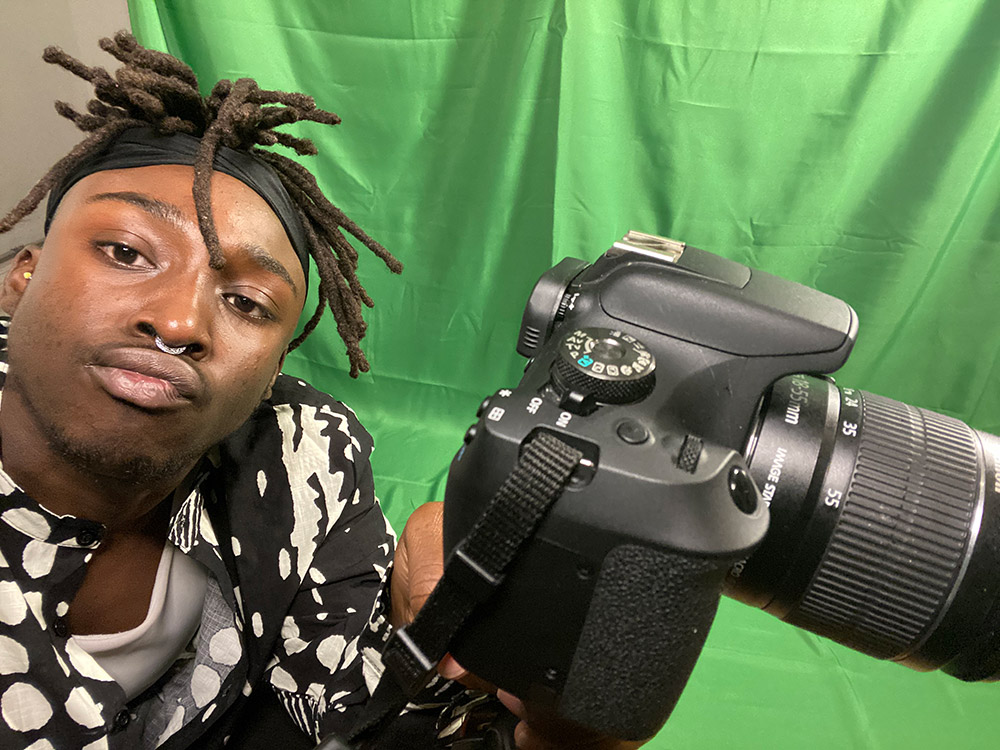

See Us as We Are
Written & performed by Vic Wynter,
with performers Ireashia M. Bennett, morgan mcnaught, jireh l drake, darien, ALEXA GRÆ, Darling Shear, and Tracie Kunzika, and video editor Tracie Kunzika
Even in moments of our erasure we still find a way to show up and influence culture in so many different ways. What a better way to tell that story than through the conduit of Frankie Knuckles, a queer house music icon. Through movement I wanted to tell the story of the space we are given historically contrasts the full lives we live and the space we deserve to take up.
About the Artist
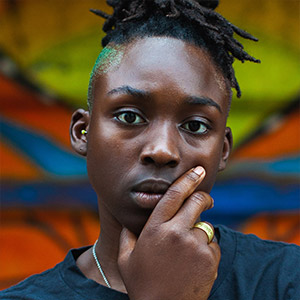
Vic Wynter (they/them) is a queer nonbinary Chicago based performance artist. Vic, being self-taught, has always found a home in performance. Their practice, formed of trial and error, was birthed from their time at the Neo-Futurarium. They’ve danced with the Fly Honeys, assistant directed, premiered autobiographical work, and with an ensemble created an educational outreach show. They weave their experiences into stories reminding us, we are all connected even in a world trying to stifle our powerful voices.
Discussions
KICKBACK Happy Hour
Saturday, February 20, 2021
How can Black and LGBTQ artists embrace the power of our voices and take agency in telling our own stories to prevent being erased? And how can we find support, healing, and therapy through queer community-building and House music?
Join multi-disciplinary artist Sojourner Zenobia, director Mikael Burke, and artist Vic Wynter for a conversation around these topics and the KICKBACK performance “See Us As We Are.”
Artist Reflection
Some of the documents that I was finding in the [Stony Island Arts Bank] archives were pathologizing homosexuality. It seemed as though the clinical understanding or healing of homosexuality was the extent to which this identity could be discussed. There were a couple books on more iconic queer figures but of the tens of thousands of books that exist in the library—I stood before a pile of only about 15-20 books that had to do with queer/trans Identity.
In this archive that holds various pieces of black culture and history, it came as no surprise that the sources I did find discussed queer Identities in this way. There is a long standing history of homophobic attitudes within the black community and in attempt to preserve what is deemed a respectable history, we (black queers) often slip through the cracks. One thing that became very clear to me was that even still we (black queers) find a way to shine through. We sort of hide in plain sight out of necessity but also, in being who we are, many times gets overlooked.
I found a photo set of black folks captured through the eyes of a photographer where the folks seemed inherently queer. I could see myself in them. That led me to think about the space we are given throughout history and how that never quite does justice the full lives we live.
The vibrancy of our queer lives can somewhat be captured by The Godfather of house Music: Frankie Knuckles. I wanted to use his music because, as a queer black man, he was a pioneer of house who captured joy through the means of experimental music. His songs and sets were meant for everyone, but over the years his sounds could be a source of comfort to queers in nightlife and beyond. The Warehouse in ‘77 was a sanctuary for black queers as well as others. His goals were community orientated and he accomplished that and more. What he created speaks to the many ways in which black queers set trends and shift culture all the time. He is honored and loved, as he should, but many times others do not get that same respect.
Community feels like the root at what I have seen of many queer pioneers. Take for example William Dorsey Swann, one of the first documented drag queens born enslaved and later became free. They created a safe haven for black queers, Swann put on the first drag balls and had a home that was referred to as a brothel but what he did was provide a safe haven for what were probably sex workers to do their jobs. Swann was referred to as “The Queen,” and from what I saw I would speculate that they were gender queer.
When approaching my art, I feel through my process. I like to engage and connect with folks and the best processes that I have been part of have been a source of community and healing. I feel as though queers naturally build community with one another out of necessity. We take the best care of each other. Throughout this pandemic, the most help and care I received was from queers, black trans queers who were and continue to provide consistent mutual aid for the community. One of my goals for this work was to reflect that back in giving space and funds to black queer trans folks to speak to how they’d like their stories to be told. I felt it important to try and capture folks as the royalty that they are and so (because of the times) I also went and took photos of folks through their glass doorways/windows. The joy I get from capturing folks in what makes them feel good is a priceless gift I have gotten from doing this. It feels important to document these things. It feels important to document our stories as we want them to be told and making them readily available to the next generation. I want for our (black queer trans history) be written for and by us. I dont want queer youth having to dig to find our stories, when we are everywhere and exist in some many vibrant beautiful forms. We are full of life and deserve to take up space. There will no longer be questions or speculations of whether or not we exist because we are telling our stories. We won’t continue to be edited out of history when we contribute so much to it.
Movement as storytelling, movement as therapy. I am not formally trained in dance but I love the ways we can communicate when we dance. The shapes we can make with our bodies. I don’t always have the words but I love to emote through my limbs. I went through a 6-8 month period where I was immobile and that definitely weighed heavy on my spirit because I had to rely so much on other folks. It made me reflect on how sort of magical it is that the body heals itself. How grateful I am for what I can do with my body when I am intune. In this improvisational movement I want to show what it feels like to have my story be constrained by various factors but how that can blossom when given the space to exist as it is. The beauty of full expression.
